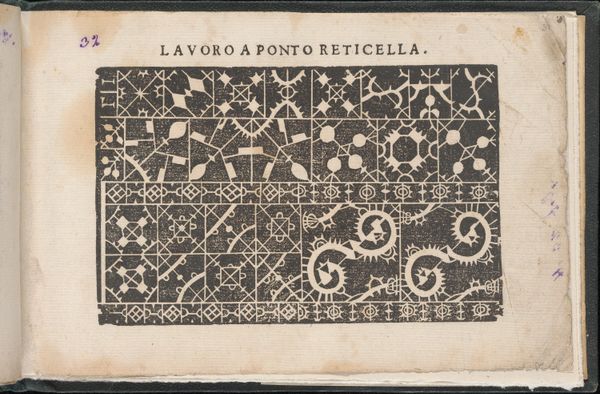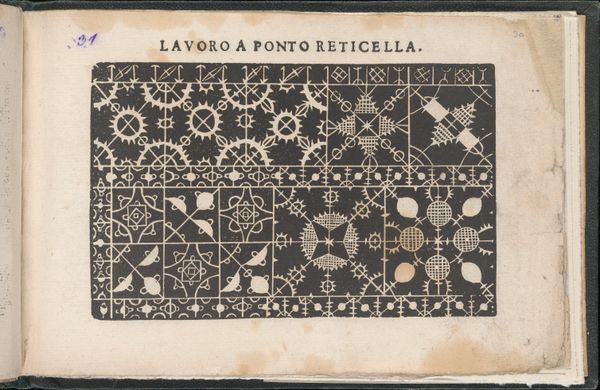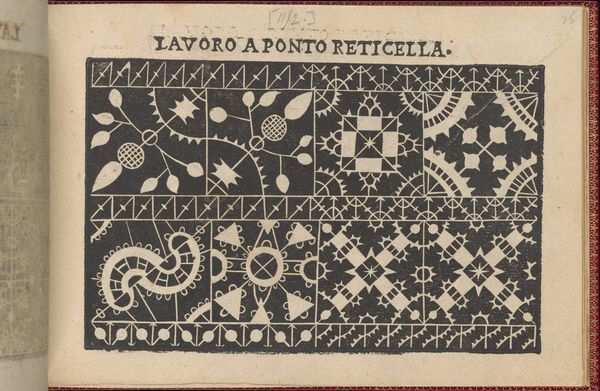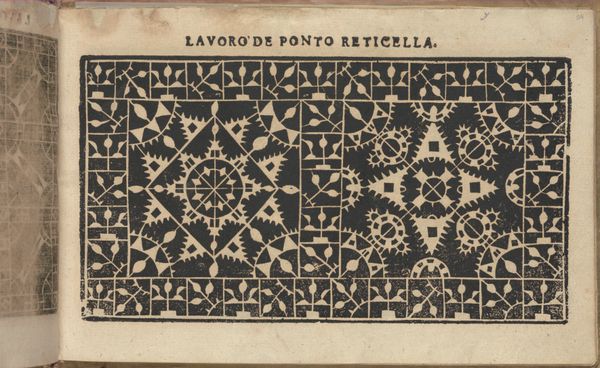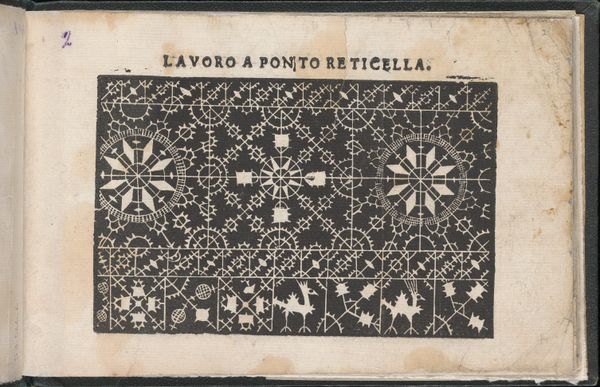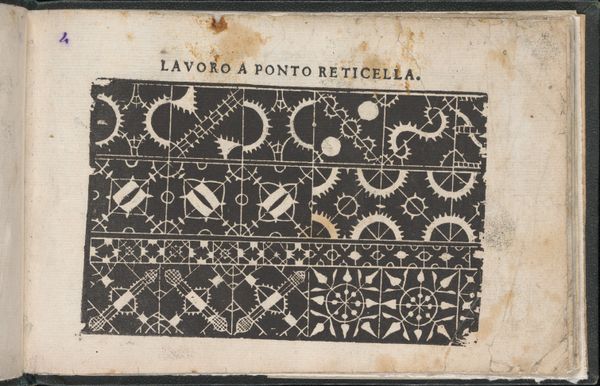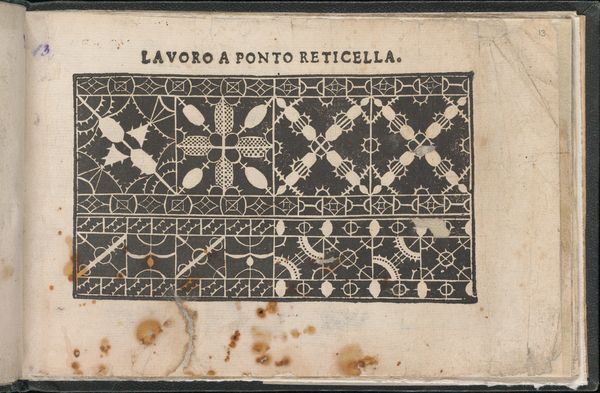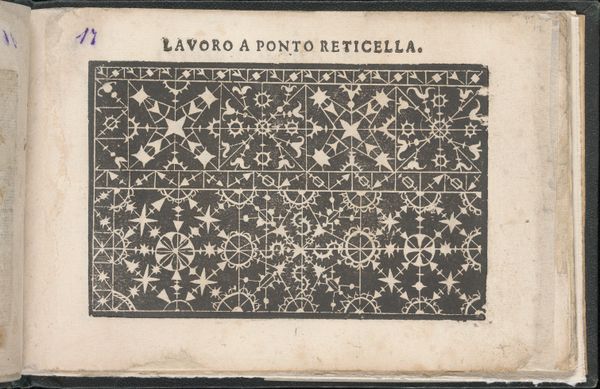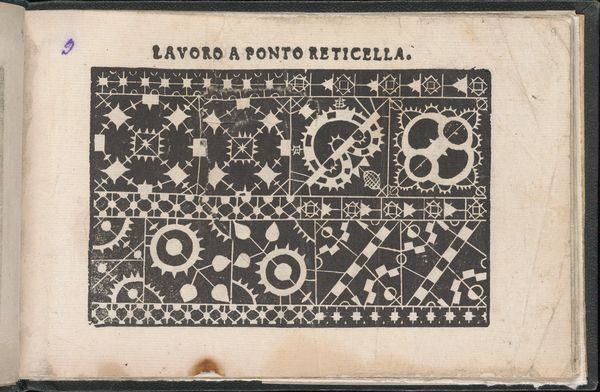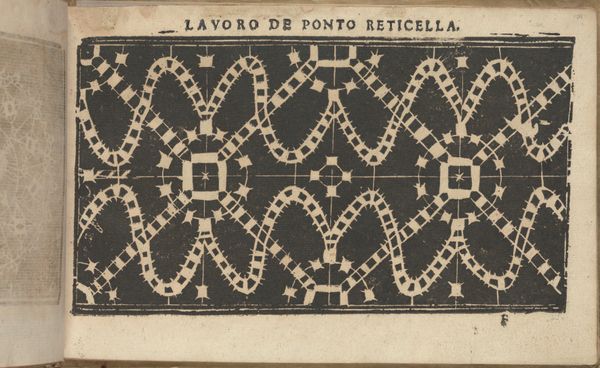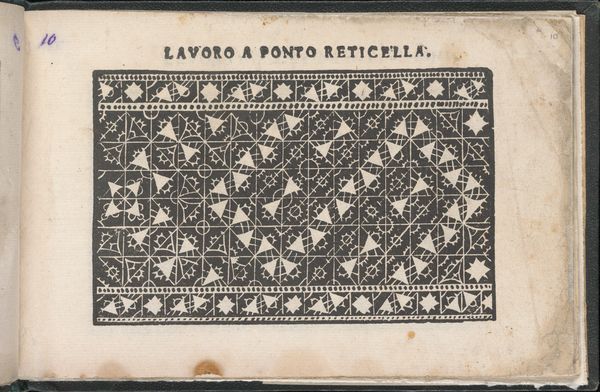
Gemma pretiosa della virtuose donne, page 14 (recto) 1625
0:00
0:00
drawing, ornament, print, engraving
#
drawing
#
ornament
#
toned paper
# print
#
11_renaissance
#
geometric
#
decorative-art
#
italian-renaissance
#
engraving
Dimensions: Overall: 5 5/16 x 7 11/16 in. (13.5 x 19.5 cm)
Copyright: Public Domain
Curator: This engraving comes to us from Isabella Catanea Parasole around 1625. It's from her "Gemma pretiosa della virtuose donne", held at the Metropolitan Museum of Art. A work of striking geometry, wouldn't you agree? Editor: Yes, quite! There's a distinct, almost rigid sense of order. The stark contrast of black and white creates a visually arresting pattern, a somewhat austere beauty that commands attention. Curator: Precisely! Parasole’s focus is on form. Notice the sharp lines, the repetition of shapes—triangles, squares, circles, all meticulously arranged within each rectangular compartment. This creates a dialogue between positive and negative space. The whole construction celebrates geometry as an aesthetic principle in itself. Editor: The patterns also remind me of old heraldry or emblems. Each section, distinct yet connected, makes me consider how such symbolic images are traditionally tied to status, identity, or even hidden meanings known only by specific groups. Does this suggest something about the roles or values associated with these virtuose donne? Curator: An intriguing suggestion! While ostensibly intended as patterns for lace making—"Lavoro a ponto reticella," or “Reticella Stitch Work” is what we find above it—we cannot discount that design's cultural potency. Lace itself became a symbol of refinement, status, and leisure for the affluent woman in the renaissance. Editor: Absolutely! The patterns within each frame appear almost like visual spells. These aren't just ornaments; they feel like constructed symbols meant to imbue the wearer, or perhaps the creator, with specific powers or virtues represented by these careful arrangements. Even basic elements, like triangles and stars, take on significance by being integrated into the fabric of daily life, shaping identity. Curator: We must also regard the composition's equilibrium. Each element appears weighed carefully against others in relation and proportion, resulting in balance, which for Renaissance ideals reflects a harmony sought after in the world itself. Editor: It's fascinating how even in these geometrical designs, a world of coded values can emerge. You leave wondering if those wearing or making the lace sensed its broader symbolic undercurrents as well!
Comments
No comments
Be the first to comment and join the conversation on the ultimate creative platform.
